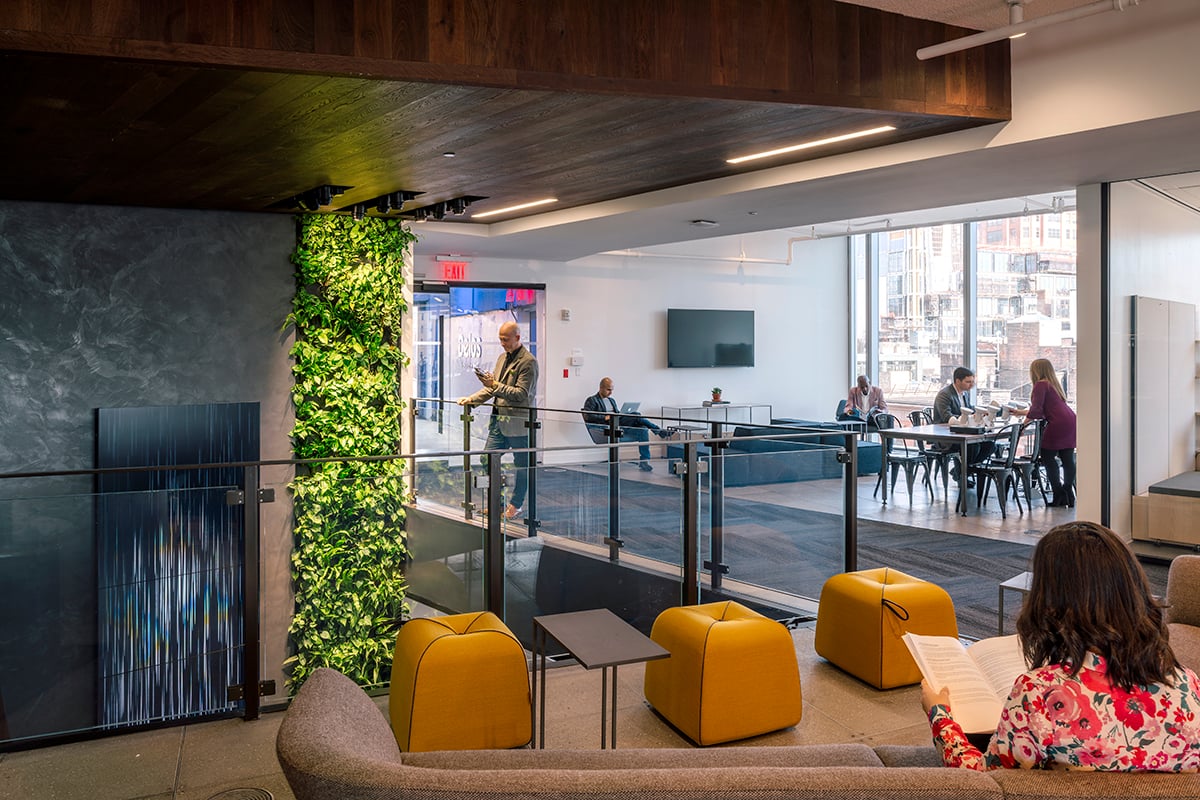Editorial Posted by Naava on December 21, 2021
Wellness With Naava: Naava and Healthy Building Standards
Why invest in healthy building?
Today, there are several Healthy Building Standards that are on a mission to tackle the problems sick, unhealthy, and unsustainable buildings are posing. A wide array of research suggests that poorly designed work and living environments can cause numerous health and environmental challenges that impact our lives negatively. These challenges include issues like decreased productivity at work, serious physical and mental health consequences, and a negative contribution towards climate change.
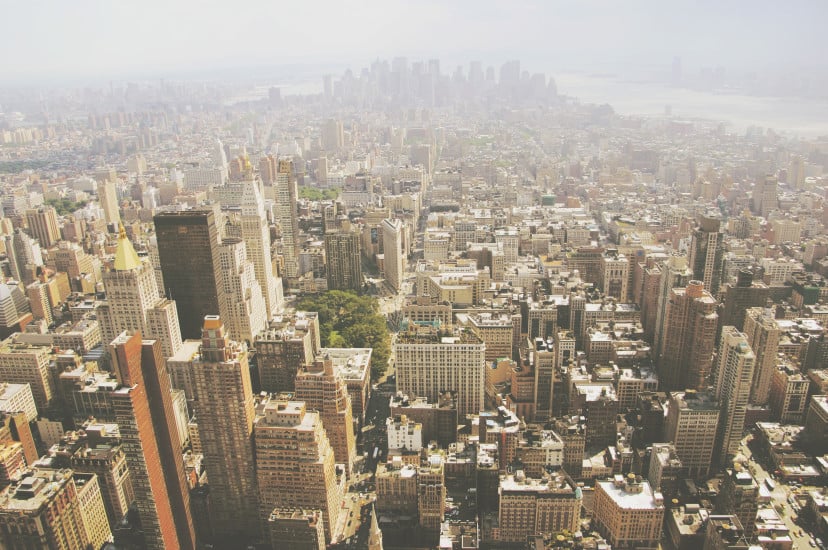
When reading about unhealthy buildings, you might have stumbled upon a term called “Sick Building Syndrome”, which despite sounding like a made-up disease actually is a real condition that is being caused by spending time in buildings that do not promote health and well-being. People affected by Sick Building Syndrome might experience symptoms such as headaches, fatigue, breathing difficulties, and mucous membrane problems. By regularly monitoring, maintaining, and designing healthy buildings, these and many other indoor-related conditions could be prevented and treated.
In this article, the focus will be on exploring three different standards for healthy building in order to discover how they are tackling the challenges of health, well-being, and sustainability in the context of modern buildings. Additionally, we are going to examine how Naava green walls can really make a difference when designing healthy buildings.
The three Healthy Building Standards addressed in this article are:
.jpg?width=2500&name=GBP_high%20res%20(4).jpg)
The WELL Building Standard
Delivered by the International WELL Building Institute (IWBI), a wholly owned subsidiary of Delos, WELL is a performance-based rating system for measuring, certifying, and monitoring features of our buildings that impact human health and well-being through Air, Water, Nourishment, Light, Movement, Thermal Comfort, Sound, Materials, Mind, and Community. WELL is grounded in a body of evidence-based research that explores the connection between the buildings where we spend approximately 90 percent of our time, and the health and well-being impacts on the people inside these buildings.
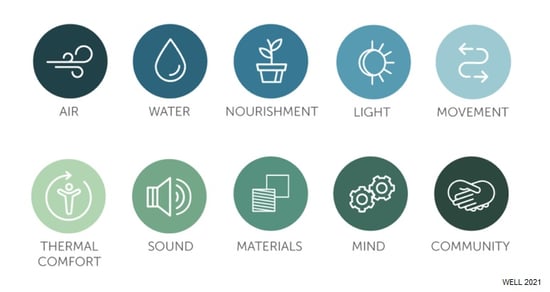
The WELL system can be operated alongside other sustainability-based building standards such as BREEAM and LEED, and it aims to determine construction techniques and technologies that will help humans lead healthier, more productive lives.
“Would you rather take the stairs or the elevator? The WELL standard suggests beautiful stair design and less prominent elevators to encourage the use of stairs.”
WELL, Green Building Partners, and Naava
Green Building Partners is a company specializing in environmental, energy, and life cycle services for construction and existing properties. Their office was the first office in the Nordics to be awarded a WELL certification.
The Naavas played a central role in the certification process. In addition to improving indoor air quality, the Naava green walls also increased the amount of green nature in the office, which is an essential part of the WELL standard.
“At Green Building Partners, we want to provide our employees with the best possible working environment, which is why we applied for the WELL certification for our office. With the certification, we simultaneously improved the indoor air in our office while increasing the amount of genuine nature with Naavas. ”
-CEO Keijo Leppävuori
.jpg?width=2500&name=GBP_high%20res%20(2).jpg)
Green Building Partners' office in Helsinki, Finland
The BREEAM Building Standard
The Building Research Establishment Environmental Assessment Method (BREEAM) developed by the Building Research Establishment (BRE) is the world’s leading sustainability assessment standard for infrastructure and construction. BREEAM evaluates the environmental, social, and economic sustainability of buildings in order to enhance the health and well-being of people who live and work in those buildings. BREEAM also takes into consideration issues such as the efficient use of energy, climate resilience, and sustainable natural resource management.
BREEAM consists of nine assessment categories, ranging from energy to ecology. During a building’s assessment, each of these categories is addressed in order to determine the overall BREEAM rating. The rating ranges from Unclassified to Outstanding. According to BREEAM, the distribution of the ratings follows a normal distribution, with only very few buildings achieving the best rating.
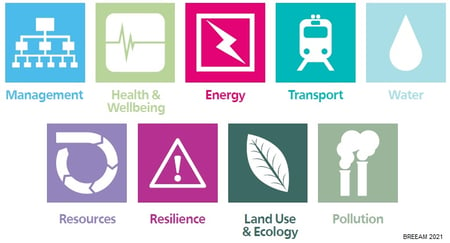 The BREEAM assessment categories
The BREEAM assessment categories
BREEAM, Nordic Investment Bank, and Naava
The Nordic Investment Bank (NIB) is an international financial institution of the Nordic and Baltic countries. NIB funds productivity-enhancing and environmentally beneficial projects aimed at reducing and preventing emissions, promoting clean technology, and mitigating climate change.
During NIB’s property renovation in Kaisaniemi, Helsinki, the institution focused on renewing its property so that the result would be a modern multi-purpose facility that emphasizes the bank’s values and promotes sustainable solutions as well as employee well-being. The effort paid off: in the spring of 2021, NIB was awarded the BREEAM Excellent certification.
When renewing the premises, Naava green walls were already considered at design stage to support NIB’s core value of sustainability, and to create a healthy, modern premise. The green walls proved to be highly popular amongst the staff and now, Naavas can be found on all NIB office floors. The green walls are used to e.g. create green reading and discussion corners as well as shared workspaces.
_high%20res.jpg?width=2500&name=NIB%20(16)_high%20res.jpg)
NIB's office in Helsinki, Finland
The LEED Building Standard
The LEED (Leadership in Energy and Environmental Design) building standard developed by the U.S. Green Building Council (USGBC) seeks to inspire innovative solutions in building design and construction, interior design, building operations, neighborhood development, cities, communities, and homes. The aim of the standard is to create solutions that are better for both the environment and the communities.
“We're committed to transforming how our buildings are designed, constructed and operated through LEED, because we believe that every person deserves a better, more sustainable life.”
-USGBC’s mission statement
Currently, LEED is the world’s most widely used building certification system with nearly 100,000 projects in almost 200 countries all over the world.
The building projects that are aiming for a LEED certification earn points in several categories, such as
- Innovation
- Water Efficiency
- Sustainable Sites
- Energy and Atmosphere
- Indoor Environmental Quality
- Materials and Resources
- Regional Priority
After the evaluation, a project can earn one of the following four LEED rating levels: Certified, Silver, Gold, or Platinum. In 2020, there were over 3,800 LEED Platinum buildings around the world.
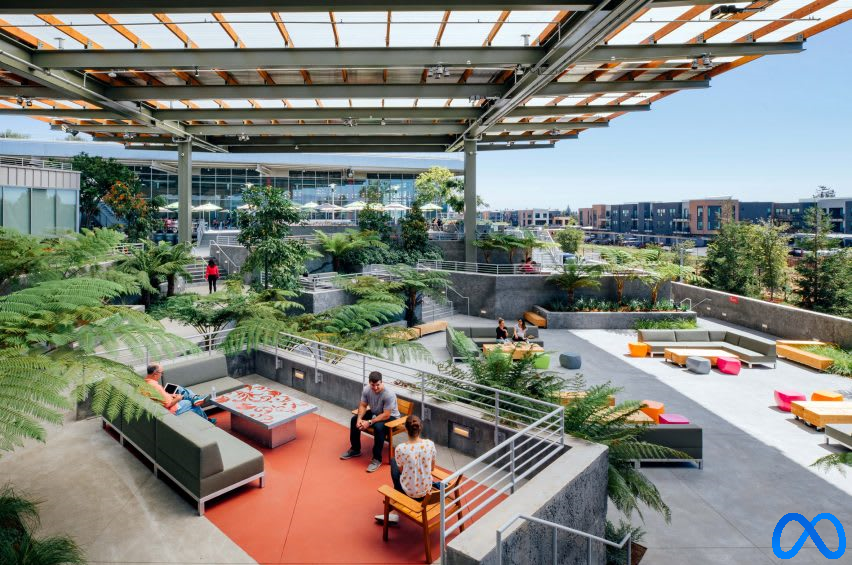
LEED Platinum certified: Meta's (Facebook's) new headquarters in Menlo Park, CA
LEED, Technopolis, and Naava
Technopolis is a company specializing in modern office space solutions and business services. Technopolis aims to provide its customers with workplace solutions that are as flexible, enjoyable, and welcoming as possible.
In 2020, the Technopolis Ydinkeskusta campus in Oulu City Centre was expanded and renewed, and due to Technopolis’ decision to invest in sustainable and human-friendly building, the campus was eventually awarded a Gold LEED certification.
Naava was already a familiar and trusted partner for Technopolis, and now the beautiful and functional green walls delight employees and visitors in Technopolis’ renewed lobby. The Naavas guide Technopolis in creating healthy and comfortable indoor environments so that customers entering their facilities will want to return to the premises in the future as well.
“We acknowledge the changing nature of workplace needs and our workplace solutions represent this. The Naava green walls help us in our goal of creating a more natural atmosphere. And as a bonus: they are a true eye-catcher!”
-Anne-Mari Huttunen, Facility Manager, Technopolis Oy/Ltd
.jpg?width=1200&name=Naava%20%26%20Technopolis_web%20(6).jpg)
Technopolis Ydinkeskusta campus in Oulu, Finland
So - Why Healthy Buildings?
In the beginning of this article, we already mentioned that unhealthy buildings are closely linked to
- decreased work productivity
- physical and mental health consequences
- sustainability and climate issues
In other words: inadequately designed buildings are extremely expensive, both for the environment and the companies operating the buildings.
As a matter of fact, when analyzing the lifespan of a building, it can be noted that while building costs account for approximately two percent of the total costs and operations and maintenance costs for about six percent, personnel costs equal roughly 92 percent of total costs. Studies have shown that buildings focused on being green and sustainable can significantly reduce their operational costs while simultaneously increasing employee productivity.
Taking these factors into account, it can be concluded that healthy buildings definitely are worth investing in. Considering the popularity and growth of Healthy Building Standards such as WELL, BREEAM, and LEED, many companies and institutional actors are already embracing a healthier and more sustainable future of construction and design, which undoubtedly will benefit the environment and stakeholders for a long time to come.

